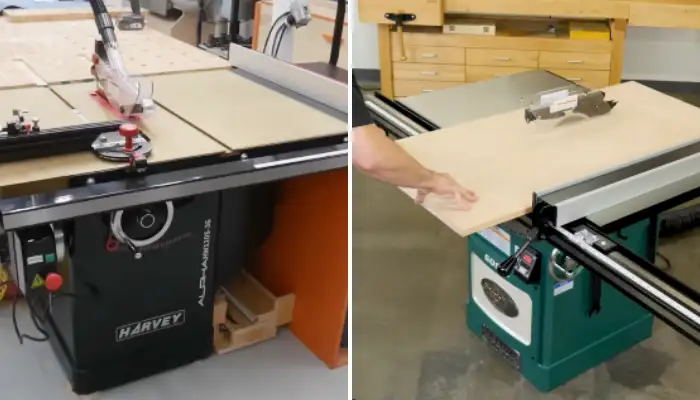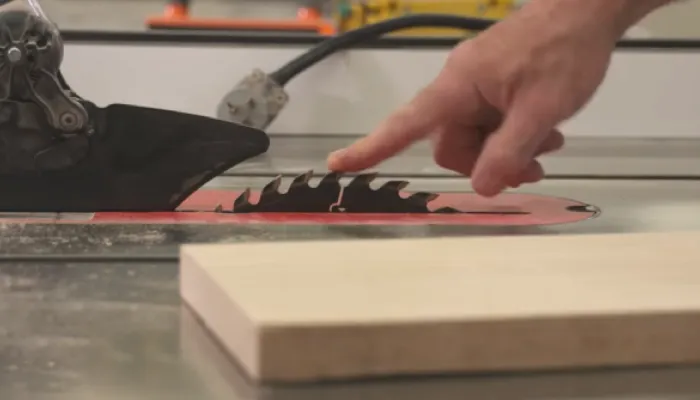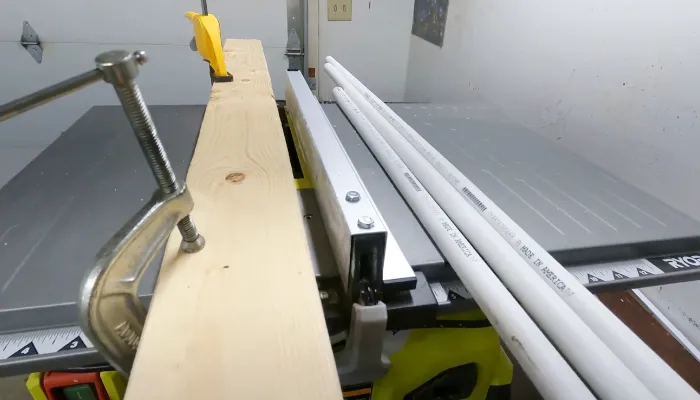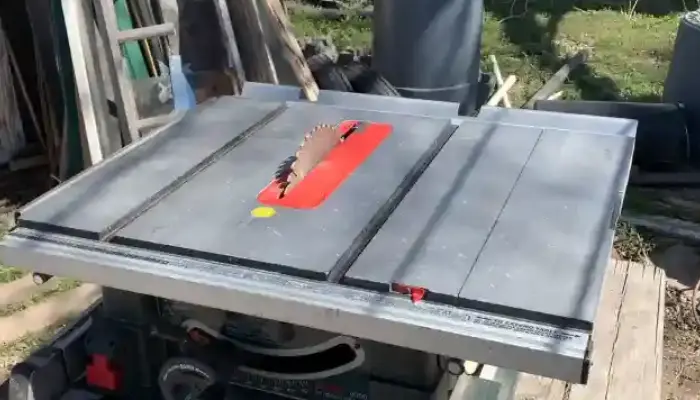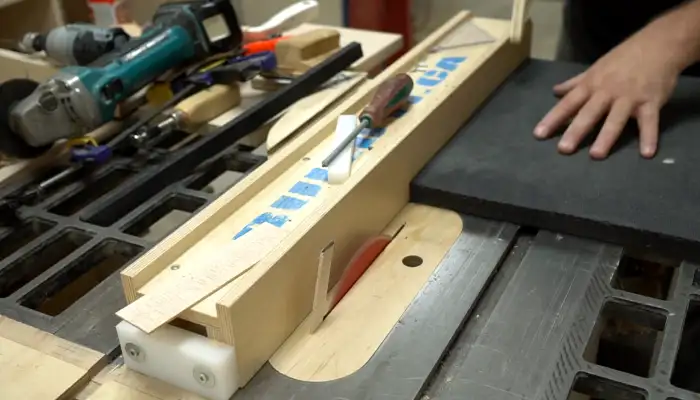110 vs 220 Table Saw: 4 Differences [For Better Choice]
Table saws usually run on 110 or 220 volts. So the choice between the two can have significant implications for power, performance, and electrical efficiency.
In general, 220-volt table saws have more power than 110-volt ones. Running at 220 volts allows for lower amperage draw, resulting in a cooler-running motor and potentially extending its lifespan.
The higher voltage also helps to minimize voltage drop issues over longer distances, ensuring a more stable power supply for the table saw.
Table saws that run at 220 volts can benefit from wiring considerations such as feeder wire size.
So, which one should you choose? Let’s look deeper and find out what makes 110 vs 220 so different.
110 vs 220 Table Saw: In-Depth Differences
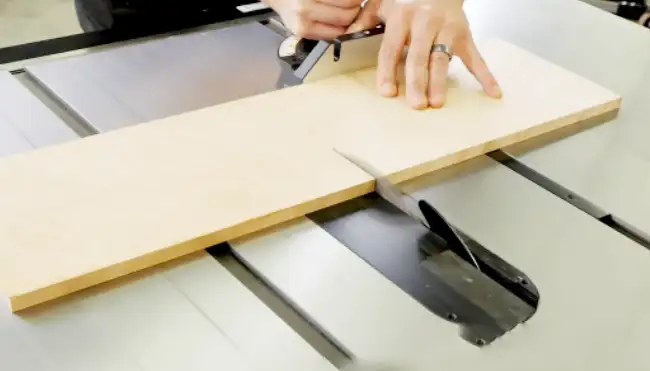
If you’re looking to compare the vs 220 table saw with other models, there are several key differences. These differences fall into the following categories:
1. Power and Performance
2. Amperage Draw and Motor Efficiency
3. Voltage Drop and Electrical Efficiency
4. Feeder Wire Size and Wiring Considerations
Let’s take a closer look at the differences:
1. Power and Performance
The higher voltage of a 220-volt table saw allows for a more powerful motor, resulting in smoother, more precise cuts through even the toughest wood materials.
Compared to a 110-volt table saw, the increased power output of a 220-volt table saw enables it to handle heavier cutting tasks easily.
220-volt table saws have higher horsepower motors, so they can make deeper and more accurate cuts, especially in thicker and denser wood.
Aside from its ability to handle tougher materials, a 220-volt table saw also has a faster power recovery time. This means it can easily cut through knots and tough grains, resulting in smoother cuts.
The increased power and performance of a 220-volt table saw make it an ideal choice for those working on challenging or demanding woodworking projects. With its ability to handle heavier cutting tasks and make more precise cuts, a 220-volt table saw is a valuable addition to any woodworking workshop.
2. Amperage Draw and Motor Efficiency
When running at 110 volts, the motor in a table saw draws more amperage, which can cause the motor to overheat and potentially shorten its lifespan.
The motor draws less amperage by running at 220 volts, making it cooler and prolonging its lifespan.
Along with the potential lifespan benefits, a lower amperage draw can also allow for the use of thinner gauge wire. This means that installation of the table saw can be easier and more cost-effective, as thinner gauge wire is typically less expensive.
3. Voltage Drop and Electrical Efficiency
220-volt circuits typically handle higher current loads than their 110-volt counterparts. This is the reason why a 220-volt table saw is more suitable for heavy-duty cutting tasks, as it can accommodate larger motors.
Also, a higher voltage reduces the current flow in the feeder wires, thereby minimizing voltage drop encountered over longer distances. This feature is more critical when the table saw is far from the electrical panel.
Using 220 volts also ensures that light dimming caused by voltage drops on the electrical lines is less frequent, resulting in a relatively steady power supply.
4. Feeder Wire Size and Wiring Considerations
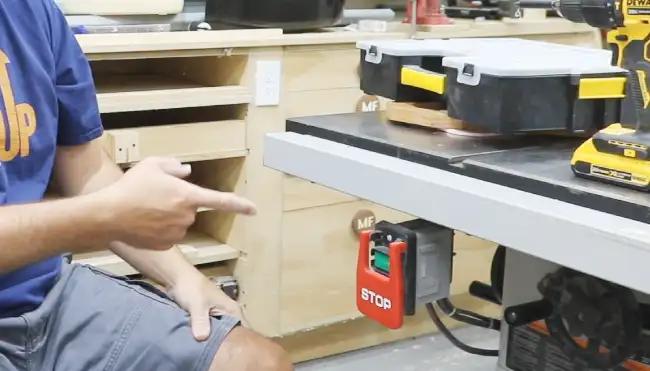
By using the standard voltage of 240 volts for 220-volt circuits with a properly sized feeder, you can observe a noticeable difference in the saw’s operation.
Smaller conductors can be used when wiring a table saw for 220 volts due to lower current requirements. This could reduce the installation cost compared to 120 volts with larger conductors.
You should note that 220 volts is safer than 110 volts due to the lower current requirements, which can also prolong the motor’s life.
By opting for 220 volts, you’re choosing a cost-effective and efficient option that can save you money in the long run.
Comparison Chart of the 110 vs 220 Table Saw
| Aspect | 110V Table Saw | 220V Table Saw |
| Power Output | Lower power output | Higher power output |
| Performance | Limited performance for heavy-duty tasks | Enhanced performance for heavy-duty tasks |
| Power Recovery | Slower start-up and power recovery | Faster start-up and power recovery |
| Motor Efficiency | Potentially higher motor temperature | Cooler motor operation |
| Wire Gauge | Requires thicker gauge wire | Can use thinner gauge wire |
| Amperage Draw | Higher amperage draw | Lower amperage draw |
| Suitable for | Light to medium cutting tasks | Heavy-duty cutting tasks |
| Voltage Drop | More susceptible to voltage drop | Reduced voltage drop |
| Feeder Wire Size | Requires larger conductor size | Can use smaller conductor size |
| Wiring Considerations | Simpler wiring considerations | Potential for more complex wiring |
| Start-Up Time | Longer start-up time | Faster start-up time |
How to Upgrade a Table Saw From 110V to 220V?
If you want to upgrade your table saw from 110V to 220V, you’ll need to follow a few steps. Here’s a quick overview:
Step #1: Gather the Tools and Materials
Step #2: Reconnect Wires
Step #3: Replace or Rewire Switch and Plug
Step #4: Test the Table Saw
Let’s take a closer look:
Step #1: Gather the Tools and Materials
To begin upgrading your 220 table saw, start by gathering all the necessary tools and materials.
This includes a 240V plug compatible with your outlet and appropriately sized wire that considers wire gauge and amperage rating. You’ll also need Marrette connectors, electrical tape, and a screwdriver.
Before making any changes, ensure the saw is unplugged and disconnected from any power source to avoid electrocution.
It’s also recommended to clean the motor’s wiring compartment to remove any dust or debris that may have accumulated.
This will help prevent any electrical issues and ensure a smooth transition during the upgrade process.
Step #2: Reconnect Wires
Remove any tape or covering from the existing wiring connections and identify the appropriate wires to reconnect with Marrette connectors. This is an important step to ensure a proper electrical connection.
Here are the steps to follow:
- Use the manual provided to identify the wires that need to be reconnected.
- Carefully connect the wires using Marrette connectors. Make sure that the wires are securely fastened together.
- Once the wires are properly connected, wrap the connections with electrical tape for added protection. This will help to prevent any accidental damage to the wires.
Step #3: Replace or Rewire Switch and Plug
Now that you’ve successfully reconnected the wires, it’s time to move on to the next step. You need to replace or rewire the switch and plug your 220-table saw. This is crucial in ensuring that your table saw is compatible with the higher voltage and working efficiently.
Refer to the manual for specific instructions on how to perform this step. Use the correct plug that matches your outlet and ensure compatibility. Be sure to take note of any safety precautions that need to be followed while replacing or rewiring the switch and plug.
This may include turning off the power supply and taking necessary precautions to avoid any electrical shock. By following these steps, you can ensure that your table saw is safe to use and will provide you with optimal performance.
Step #4: Test the Table Saw
Remember to test your newly rewired table saw when you plug it into the 220V outlet to make sure it works. Testing the saw is a key step that ensures your safety and the reliability of the saw.
To test the table saw, plug it into the appropriate 220V outlet and power it on. Check that the motor starts up smoothly and the saw operates as expected.
Note any unusual sounds or vibrations that may indicate a problem with the wiring or motor. If you identify any issues, turn off the saw immediately and consult an expert or a qualified electrician to avoid accidents.
Is 220 better than 110 for table saws?
220V is generally considered superior to 110V for table saws due to several benefits. It provides significantly faster start-up and smoother cuts through tough grains and knots with minimal lag or hesitation, resulting in greater ease and precision in woodworking projects.
The power recovery of 220V is superior, providing optimal cutting performance, making it a beneficial choice for those seeking top-level power and performance from their table saw.
Opting for 220V will provide noticeable advantages, especially regarding improved power and performance.
What costs more to run a 110 or 220 table saw?
It’s generally more cost-effective to run a 220V table saw than a 110V table saw. This is because a 220V table saw draws lower amperage to deliver the same power output as a 110V table saw.
Since electricity costs are based on the amount of energy consumed, the reduced amperage draw of a 220V table saw resulted in lower electricity bills over time.
Also, a 220V table saw can utilize thinner gauge wire, which can be less expensive to install or replace if needed.
Upgrade Your Table Saw: The Power Difference Between 110V and 220V
Now you know the difference between 110V and 220V table saws. Compared to 110V saws, 220V saws are stronger and more efficient. They’re perfect for industrial and professional settings where heavy-duty work is performed daily.
Upgrading your 110V saw to 220V is a great way to increase its performance without buying a new one.So, if you want to take your table saw skills to the next level, upgrading to a 220V saw is definitely worth considering.

